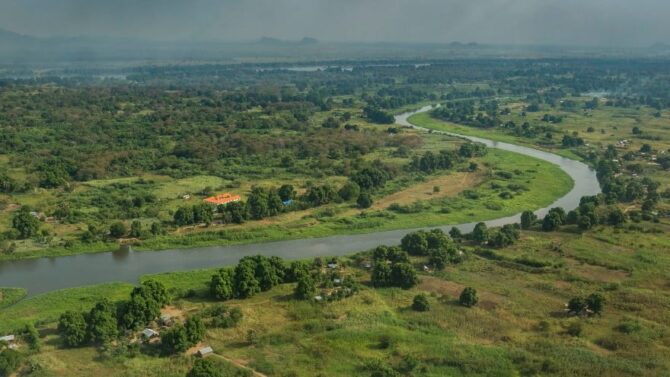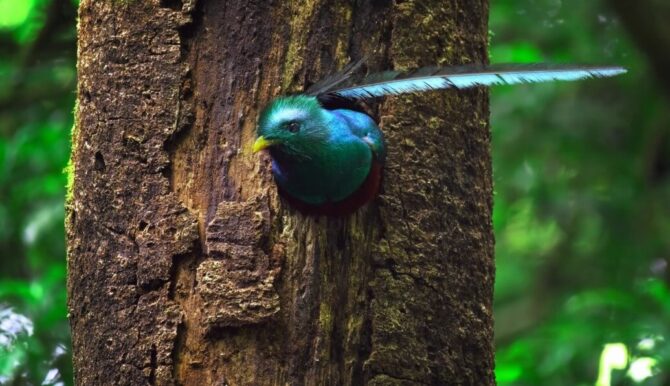The river is likely the most significant landform in many areas, regulating temperature, providing habitat to plants and animals, and meeting several human demands.
Rainwater accumulates in streams and flows downward to the lowest point. These streams eventually unite to generate large bodies of water immediately or after feeding a lake.
Hence, significant rivers like the Mississippi, Nile, and Amazon formed. With some rivers being substantially longer than others, we will be looking at the top 10 longest rivers in the world by length.
The Longest Rivers in the World
10. Amur River
Length: 4,480 kilometers
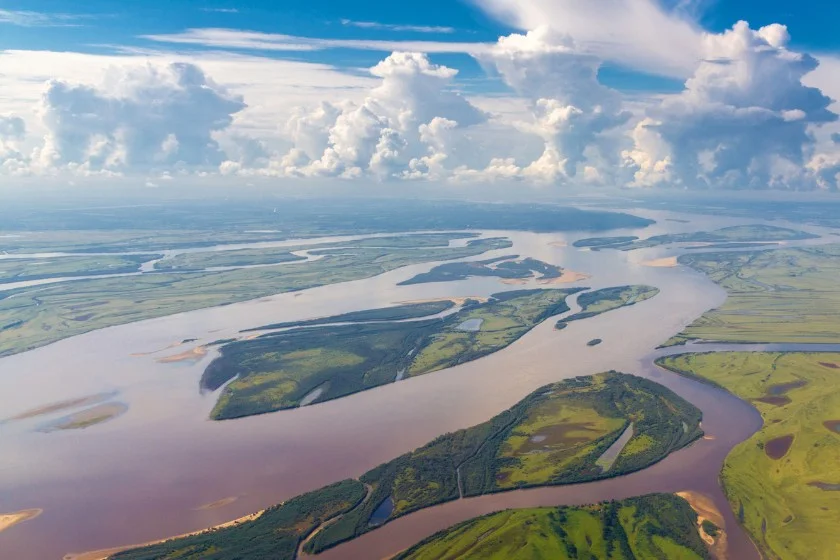
First but not foremost, the Amur River of Russia and China is the world’s tenth river by length.
The Argun River, a 1,620-kilometer-long river, and the Kherlen River, a 1,254-kilometer river in Mongolia and China, join the Amur River to achieve this feat in 4,480 kilometers.
Remarkably, the Amur River to various wildlife, including native and predatory species like the Amur pike, Amur catfish, northern snakehead, taimen, and yellowcheek (Elopichthys bambusa).
9. Congo River
Length: 4,700 kilometers
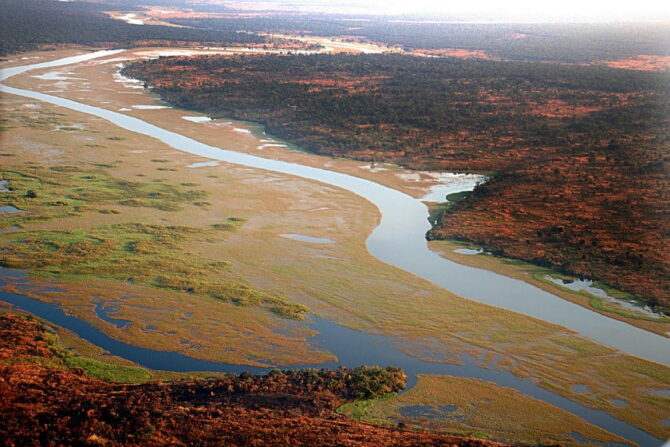
Despite coming ninth among the world’s longest rivers, the Congo River is Africa’s second-longest river and the world’s second-largest river by discharge volume.
However, it comes atop other rivers in-depth, surpassing 700 feet in some places.
While no other major river in the world crosses the equator once, the Congo River crosses the equator twice.
8. Paraná–Río de la Plata–Rio Grande River
Length: 4,880 kilometers
These three waterways, located in South America, join to form the world’s eighth river system.
However, the Paraná, flowing across Argentina, Brazil, and Paraguay, is the major river among the three, while the Río de la Plata and the Rio Grande are constituents.
The Río de la Plata, translated in English to River Plate or Platine River, originates from the confluence of the Uruguay River and the Paraná River at Punta Gorda, Uruguay, and terminates at the Atlantic Ocean.
The Rio Grande almost follows the same course, joining the Paranaíba River to form the Upper Paraná River.
7. Ob–Irtysh River
Length: 5,410 kilometers
It’s logical to think that the world’s largest country by landmass will house a major river, and such logic did not fail you.
The Ob flows from the Altas Mountains into the Arctic Ocean in Russia, representing one of the three significant Siberian rivers, with the Yenisei and the Lena Rivers.
The Irtysh extends across Russia, China, and Kazakhstan as the Ob’s chief tributary and sits second on the world’s longest tributary river list.
The Ob and Irtysh, together, form the world’s seventh-longest river system.
6. Yellow River (Huang He in Chinese)
Length: 5,464 kilometers
The Yellow River (Huang He in Chinese) is China’s second-longest river after the Yangtze.
However, it is arguably the country’s most popular river and one of the world’s most notable thanks to its yellowish-brown color, where it gets its name and its contribution to ancient Chinese civilization.
The river’s color results from a large amount of loose sediment, like silt.1
While it only flows through nine provinces and empties into the Bohai Sea, the Yellow River retains its outstanding significance in China, practically and symbolically.
5. Yenisey River
Length: 5,549 kilometers

The Yenisei River rises in Mongolia and travels north, draining a sizable portion of Siberia before emptying into the Kara Sea in the Arctic Ocean.
It is part of the world’s three great Siberian waterways, with the Ob and the Lena also inclusive.
Yenisei water is composed of 33% rainwater, 33% snow water, and 33% groundwater influence.
4. Mississippi/Missouri River
Length: 6,275 kilometers
In Montana, the Missouri River begins when the Madison, Jefferson, and Gallatin rivers converge, then travels west to east through the state’s heart before joining the Mississippi River at St. Louis.
The Mississippi River, the second-longest river in the country, and the Missouri River, the country’s longest river, combine to form the fourth-longest river in the globe; this river makes its home in North America.2 3
The Missouri-Mississippi combination stretches for around 3,900 miles if measured from the head of Missouri.
3. Yangtze River
Length: 6,300 kilometers
China’s and Asia’s longest river, the Yangtze, ranks third among the world’s longest rivers.
Its basin drains a significant portion of South China, covering more than 600 miles from north to south and almost 2,000 miles from west to east.
Compared to other rivers in China, the Yangtze also transports water most. The Dangla mountains on the eastern side of the Tibetan plateau are where the river’s source is located.
To get to the East China Sea at Shanghai, the Yangtze River travels 6,300 kilometers.
This river’s vastness and importance are equally seen as about half of China’s fish consumption, and two-thirds of its grains are sourced from the Yangtze basin.
2. Amazon River
Length: 6,400 kilometers
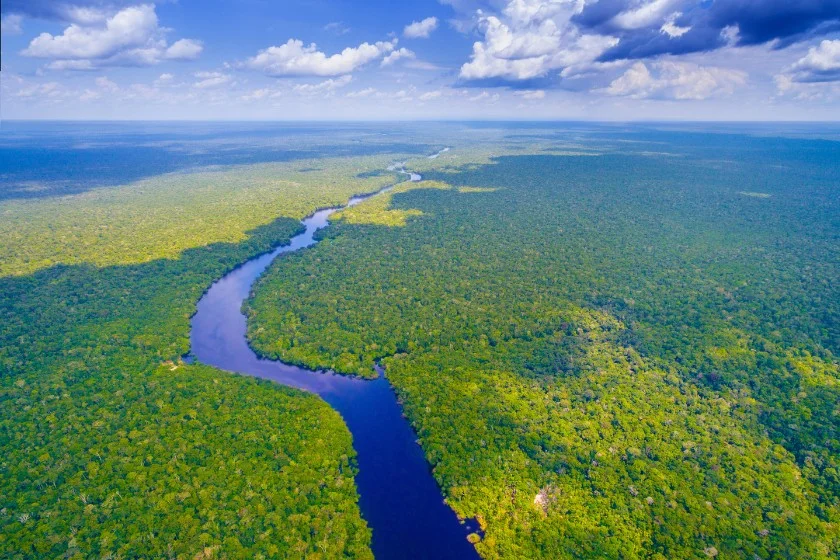
There is widespread disagreement over the length of the Amazon River since the location of the Amazon River’s beginning has been a subject of intense discussion for centuries.
But asides from that, the world’s largest drainage system is the Amazon River, which has over 1,100 tributaries.
The Amazon River is found in the northern region of South America’s Amazon Rainforest.
The Amazon River has diverse sources, but one of them is at the meeting of the Maraón and Ucayali Rivers, even though the Maraón River is its principal tributary.
It continues to run for another 1,000 km after this and eventually joins the Ucayali River. The amount of freshwater that flows into the Atlantic Ocean affects the Caribbean’s sea level.
Brazil controls most of the Amazon river, which also flows through Colombia, Peru, and Venezuela.
Because the Amazon River receives around 40% of the water from all of South America, its height increases significantly during the rainy season.
1. Nile River
Length: 6,650 kilometers

The Nile considered the world’s longest river, spans 4,160 miles north, from east-central Africa to the Mediterranean.
The largest lake in Africa, Lake Victoria, which is situated at the confluence of Kenya, Tanzania, and Uganda, is thought to be where the Nile River begins.
The river continues north into Uganda until it reaches Lake Kyoga. As it approaches Lake Albert’s northern coast, it flows northwestward.
The Blue Nile is then encountered when it travels north through Sudan and South Sudan.4
The Nile River comes to an end at the Nile Delta. When the river empties into the Mediterranean Sea, it forms the Delta in northern Egypt.
This water was important to the ancient land of Egypt as it served as a source of irrigation, amongst other uses. Today, Fishing and agriculture are sustained by the Nile.
The Nile also acted as a mode of transportation. Numerous types of wildlife, including tortoises, frogs, and hundreds of wild birds, call the Nile river home.
Frequently Asked Questions
Are all rivers freshwater?
Saltwater rivers occur where groundwater flows over salt layers. Rivers usually contain low concentrations of dissolved solids and salts, unlike seawater and brackish water.
Still, there are saltwater rivers in various places on earth. An example is the Ribera Salada in Catalonia, Spain.
What is the cleanest river in the world?
The Thames River in London, United Kingdom, is widely regarded as the world’s cleanest river, thanks to its sparkling spotlessness.
Surprisingly, the river has a history of contamination, prompting the banning of irresponsible sewage into the river and the collaboration with water treatment plants. The U-turn now earns the river its favorable status as a clean and biodiverse water system.
What is the oldest river in the world?
The Finke River in central Australia is the world’s oldest river dating 350 and 400 million years ago. The river predates the Alice Springs Orogen, a former intraplate tectonic episode in the region responsible for forming some large mountain ranges.
Other smaller rivers in the Northern Territory being of a similar age serve as the most significant criterion for the river’s age.
What is the deepest river in the world?
Africa’s second-longest and ninth-longest river, the Congo River, is the world’s deepest river, surpassing 700 feet in some places.
Wrap Up
The longest rivers in the world provide amazing natural habitats to plants and animals also and also meet several human needs.
Regardless of whether you enjoy the water, you will probably concur that rivers are important to the environment.
Making the most of rivers has grown more crucial due to the rising global demand for fresh water and the finite supply of fresh water.
Some of the world’s most populous regions have experienced water shortages due to climate change. Unless a more practical solution is found, this could eventually impair the availability of food and water.
Next up…
References & Notes
- Huang He Valley. National Geographic.
- Mississippi River. American Rivers.
- Victor M. Ponce. Source of Missouri river.
- The Blue Nile River. Ethiopia Top Attractions.
